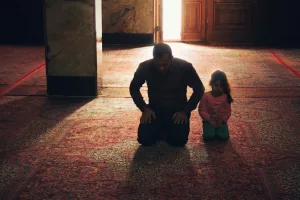Understanding the roles of religious leaders involves delving into the distinct characteristics that define a rabbi and a priest. Both are pivotal figures within their respective faiths, Judaism, and Christianity, but their duties, responsibilities, and theological backgrounds are quite different. Let’s explore these roles more deeply, providing insights and examples that highlight their unique contributions to their communities. Rabbis and priests serve as spiritual beacons, yet their paths and approaches diverge, shaped by their faith’s history and practices. This exploration reveals not only their differences but also the shared purpose of fostering spiritual growth and community well-being.
Role of a Rabbi
Spiritual Leadership and Community Building
In Judaism, a rabbi acts as a spiritual leader, teacher, and counselor within the Jewish community. This role is deeply rooted in the tradition of Jewish learning and community life. Rabbis are ordained within the Jewish tradition and are experts in Jewish law, ethics, and scripture. They lead religious services, provide pastoral care, and offer guidance on matters of faith and practice to their congregants.
Case Study: Rabbi Jonathan Sacks, a renowned former Chief Rabbi of the United Hebrew Congregations of the Commonwealth, exemplified the role of a rabbi in modern society. His work in interfaith dialogue and his writings on Jewish thought have inspired many, demonstrating the rabbi’s potential to influence not only their own community but the broader world.
Interpretation of Texts
Rabbis play a crucial role in interpreting religious texts and applying them to contemporary issues. This involves understanding ancient scriptures and translating their lessons to address modern-day challenges. For example, when dealing with ethical questions about technology and bioethics, rabbis often convene to discuss and guide their communities on how to uphold Jewish values in a rapidly changing world.
Educational Role
Rabbis often lead educational programs, teaching both children and adults about Jewish history, law, and tradition. They might organize study groups or lectures on the Torah, offering a space for communal learning and discussion.
Example: A rabbi might start a weekly Torah study group, providing a platform for congregants to explore religious texts in depth, ask questions, and engage in meaningful dialogue.
Role of a Priest
Sacramental Duties
In Christianity, a priest is a clergy member ordained to perform sacred rituals and sacraments. Priests serve as intermediaries between God and the congregation, administering sacraments such as baptism and communion. These rituals are essential for spiritual growth and connection within the Christian faith.
Example: During a baptism ceremony, a priest welcomes a new member into the Christian community, symbolizing spiritual rebirth and commitment to the faith.
Pastoral Care and Guidance
Priests offer spiritual guidance and support to parishioners, helping them navigate moral dilemmas and deepen their relationship with God through prayer and reflection. This pastoral role is essential, providing comfort and counsel during life’s challenges.
Real-life Application: Priests often visit hospitals to provide sacraments and comfort to the sick, embodying their role as a source of spiritual support and hope.
Community Engagement
Priests also engage in community service and outreach, fostering a sense of belonging and support. They may lead initiatives such as food drives or volunteer programs, aiming to serve both their congregation and the wider community.
Practical Tip: A priest might organize a weekly community meal, inviting anyone in need of a warm meal and fellowship, thus reinforcing the church’s role as a community hub.
Educational Background
Pathway to Becoming a Rabbi
The educational requirements for becoming a rabbi involve years of study in Jewish texts, history, and theology, typically at a yeshiva or seminary. This rigorous education equips them with the knowledge and skills to lead their congregations effectively.
Insight: Many rabbis also pursue additional academic studies, earning degrees in areas such as education or counseling, which enhances their ability to serve their communities in diverse ways.
Pathway to Becoming a Priest
Priests usually attend seminaries or theological schools where they study theology, scripture, and pastoral care. This education prepares them to serve their communities in a holistic and compassionate manner.
Example: A seminary curriculum might include courses on church history, pastoral counseling, and homiletics (the art of preaching), ensuring that future priests are well-rounded in their understanding and practice.
Marital Status and Lifestyle
Rabbis and Family Life
In Judaism, rabbis can be married and have families, reflecting the importance of family life and community ties. This allows rabbis to understand the challenges and joys of family life firsthand.
Example: A rabbi might draw on personal experiences when offering premarital counseling, providing relatable insights and advice to couples.
Priests and Celibacy
Conversely, in many Christian denominations, priests are required to remain celibate. This commitment is seen as a way to fully devote themselves to their spiritual calling.
Insight: Celibacy allows priests to serve their congregations without the responsibilities or distractions of family life, enabling them to dedicate themselves entirely to their ministry.
Sacred Practices
Jewish Ceremonies
Rabbis conduct Jewish ceremonies such as circumcisions, weddings, and funerals. These rituals embody the continuity of Jewish heritage and faith.
Example: During a Jewish wedding, the rabbi officiates the ceremony, which includes signing the ketubah (marriage contract) and the breaking of the glass, rituals rich in tradition and symbolism.
Christian Sacraments
Priests administer the sacraments of the Christian faith, including baptism and Eucharist. Through these sacraments, priests symbolize the presence of Christ in the lives of the faithful.
Example: During the Eucharist, the priest consecrates bread and wine, which are shared among the congregation as a symbol of unity and remembrance of Jesus Christ’s sacrifice.
Challenges and Common Mistakes
Navigating Interfaith Dialogues
Both rabbis and priests may engage in interfaith dialogues, which require sensitivity and respect for differing beliefs. A common challenge is balancing the desire to share one’s faith with the need to respect and understand others.
Tip: Effective interfaith dialogue involves active listening, openness to learning, and finding common ground while honoring differences.
Adapting to Modern Challenges
Adapting ancient traditions to modern issues is a shared challenge. For instance, both rabbis and priests might address contemporary ethical questions like environmental stewardship or social justice.
Advice: Stay informed about global issues and engage with congregants in discussions about how their faith can inform their responses to these challenges.
Additional Insights
The Role of Women
In some branches of Judaism and Christianity, women are increasingly taking on roles as rabbis and priests. This shift reflects broader societal changes and prompts discussions about gender roles within religious traditions.
Example: Rabbi Sally Priesand, the first woman ordained as a rabbi in the United States, paved the way for future generations of women in Jewish leadership roles.
Technological Integration
The integration of technology in religious practice is another area where rabbis and priests are innovating. From live-streaming services to virtual counseling sessions, technology offers new ways to connect with congregants.
Practical Tip: Utilize social media and digital platforms to reach younger audiences and those unable to attend services in person, expanding the community’s reach.
Both rabbis and priests, despite their differences, are united in their dedication to guiding their communities through spiritual, ethical, and practical challenges. Their roles are evolving, yet remain deeply rooted in the rich traditions of their faiths, providing continuity and connection in a changing world.



